Why?
Working on models with lots of tiny pieces you need more than just your fingers to be efficient.
en
Working on models with lots of tiny pieces you need more than just your fingers to be efficient.
When imagining new stuff for which there is no available set of building instructions, one needs to experiment a lot: try different pieces in different combinations. That needs ready access to parts, and having the parts in some order. To achieve order I don't use much: just a tower of plastic boxes with trays.
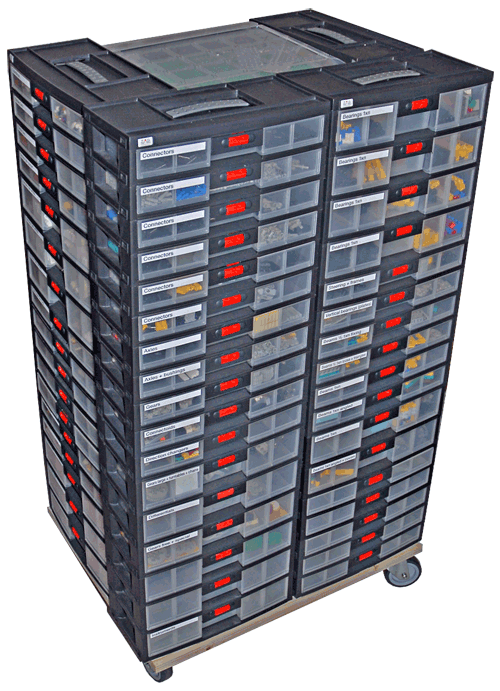
I mounted five racks of trays together on a plank with casters so it’s easy to turn around and wheel out of the way. There are two racks in front with the most used parts, two on the sides and a less high one at the back (on top of which is a bigger, flat drawer to hold larger parts such as the Hailfire Droid wheels). Trays look like this:
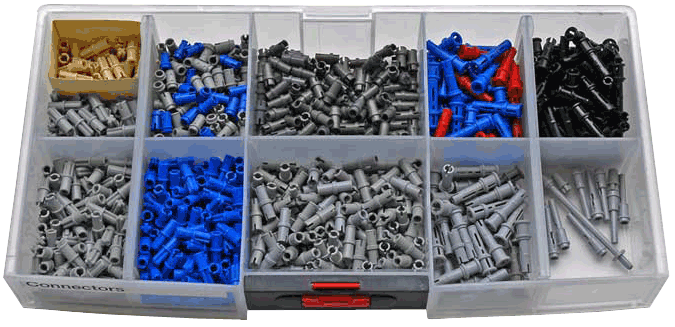
Sort by function, not by colour. Lego has recently combined colour with function for the smaller parts that are usually not decorative, such as connectors and pins. These are also very small and this immediately raises the question of how to manipulate very small parts.
Here are four tools I use: a bamboo barbequeue skewer, tweezers, a ruler and Lego's disassemblers.
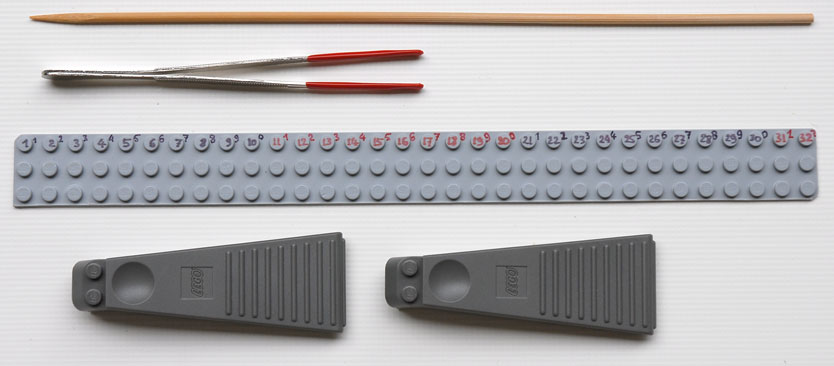
The skewer is good for reaching into complex structures but I use it very seldom.
The tweezers must have rubberised ends, otherwise they will not hold small parts. I use them mainly for picking small parts from the trays.
The ruler helps deciding which parts to use. I made it from a rest of a base plate that I had cut up for other reasons. First I flattened the tops of the knobs with some fine-grained sanding paper to take away the embossed tiny “lego” legends, then I put the numbers on with an indelible ink, fine-tipped felt pen. The ruler can be made more easy to pick up if you put a brick on it.
The disassemblers come from Lego. Their main characteristic is that they do not have the normal 0.2mm vertical gap beween bricks; instead they come flush against any brick they are applied to:
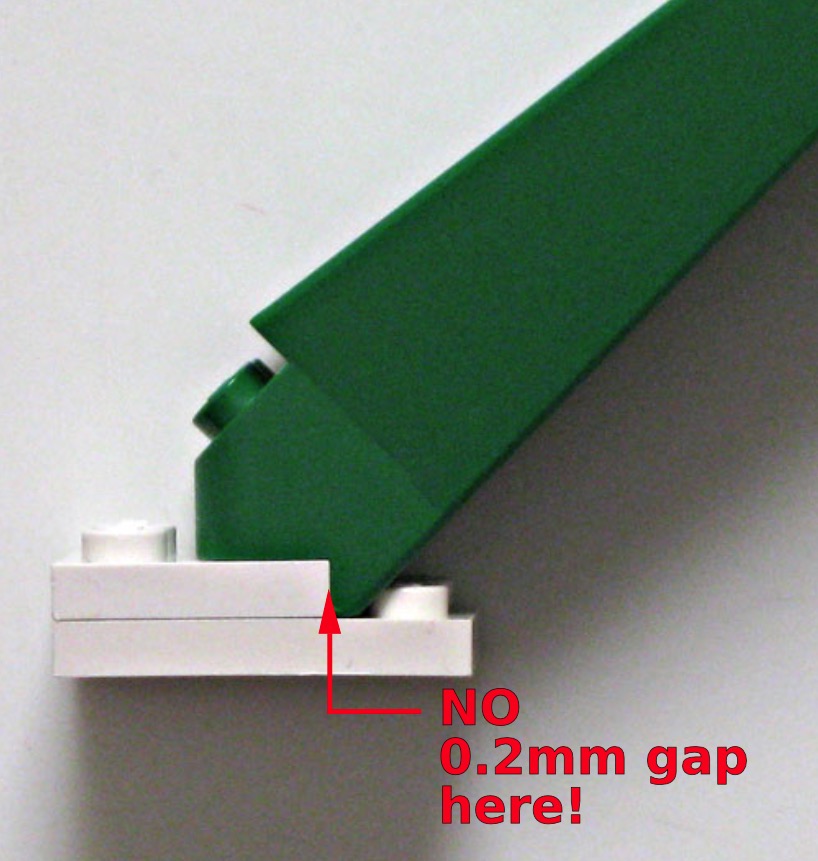
Hence it is easy to apply torque to its sides so as to pry it off other bricks. This is indispensable for removing plates in certain cases. You need two disassemblers.
Sometimes it is necessary to align parts precisely, especially stuff that fixes on axles. This may involve quite some force, and to avoid damaging parts, my fingers, and other things, I use a piece of perspex as a flat, hard surface against which to push.
Lego's base plates are thin affairs of 48×48 knobs. Because they are rather flexible, a stiff support under them is a good idea. Such a support also lets you transport a model under construction without upsetting it. I use two different supports (dimensions are in mm).
One is cheap and easy to make: just a square, cut from a piece of polyurethane insulation panel. These panels can be found in any hardware or DIY store, and can be cut with a sharp cutter. I then "finish" the edges by taping them off with painter's masking tape, which makes the edges less prone to denting.
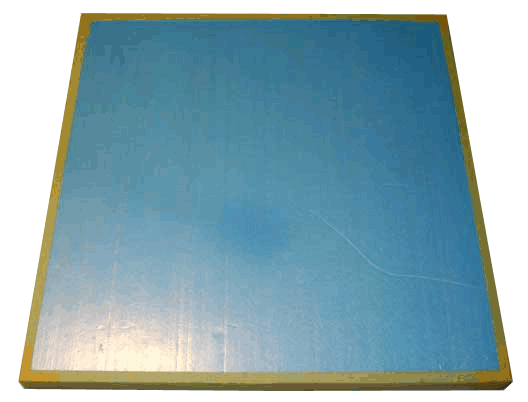
Polyurethane plates come in several colours, mine are yellow or blue. I cut them to 385×385; a Lego base plate is 383.8×383.8 (= 48×8 - 0.2).
While the polyurethane plates are nice permanent supports for large decorative models like the Eiffel Tower, they are not so good during the building phase, when you need to pick up the model frequently, and also want to turn it around. I have a few wooden building plates with handles:
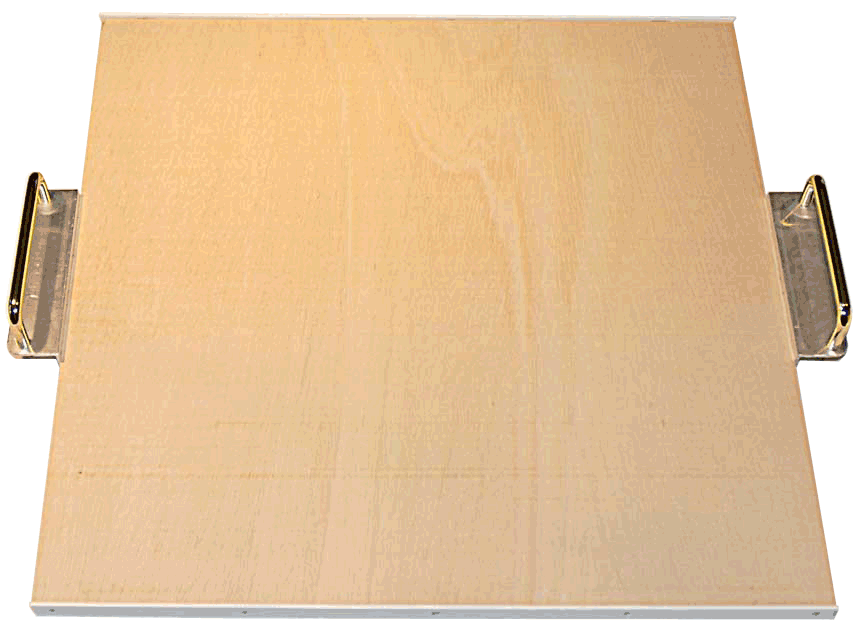
The handles are fixed to pieces of aluminium L-profile. The profile sticks up a little from the wood. I fix a plastic strip on each of the other two sides, and this strip is also slightly higher than the thickness of the wood. This prevents the Lego base plate to slip off when moving the construction around.